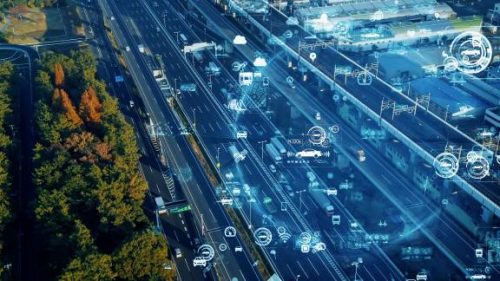When you work in logistics, real time information is your very best friend. You need this for so many reasons and elements of your business to help maintain efficiency and functionality. What you might not know however, is how to get this data. There are a variety of solutions available to help fleet managers always be in the know, telematics and GPS tracking being two of them. Below is some more detailed information about each one, so that you can understand what makes them stand out from one another.
GPS

A GPS tracking system is going to give you full control of your mobile assets and the leverage that you need to be able to efficiently manage them. You can utilize GPS fleet tracking software and solutions to track your fleet with real time GPS data. Why this is important is because that information is vital to the health of your overall operations.
You will have customers who want to know where their products are, dispatch managers who need to be able to plan driver routes and schedules, and even accounting department employees who are going to want to see hard data that explains a rise in company fuel expenditures. GPS goes a long way in helping with route optimization which in logistics, is essential. Some of the most advanced software solutions can provide real time data regarding things like unfavorable traffic patterns or unexpected weather. Even things that seem simple, like reducing idle time, can be remedied with the implementation of GPS software.
Telematics
Much like the difference between a supervisor and a manager, this distinction is slight, but important, nonetheless. Telematics is where telecommunications and information processing unite. In terms of this industry specifically, telematics is going to refer to how your vehicles communicate with the technology placed in them to help improve efficiencies. You need telematics to work in tandem with GPS, so think of this as an elevation to that system.
Telematics can also provide more advanced data that can help with things like compliance issues. Instead of relying on a person to collect this data, and properly report it, you can put your faith in technology. Compliance is an especially significant benefit because unfortunately, it can be quite easy to fall out of compliance, and difficult to get back in. If you have a driver who logs in even one hour past the compliant amount of time, that can sideline your entire operation for a period of time that is determined by the pace of the players who will have to investigate this issue and lead you towards reconciliation and a resolution. Some additional benefits that you can expect are:
- Increased visibility
- A better handle on preventative maintenance opportunities
- Driver safety
- Money saving opportunities
As you explore telematics solutions keep in mind that the other tech portions of your business will have to be up to date enough to tolerate such a solution. This includes not only in house, but on the road as well.
What Does This Mean?
When you feel that you have a handle on what makes these two entities distinct, you might still be left wondering, what it matters, and what does it mean for your business. It means choices. It means that you now have the information you need to determine what solutions your fleet operations can benefit from, and which ones may be less suitable. It also means that you know what will happen once you begin using GPS and telematics in terms of benefits.
It also means training. You should not expect to be able to simply bring this new technology into your daily operations without any sort of need for training and a grace period that allows your employees to learn, adjust, practice, and execute these new systems. A sure fire way to ease workplace stress is to be right alongside your managers and drivers as they go through the ins and outs of learning something new. Especially when we are talking about the drivers, being alone in a moving vehicle, with new technology that you are unsure how to operate, and a management team that is unable to support you is a breeding ground for pressure and stress that can lead to costly mistakes and dangers.





